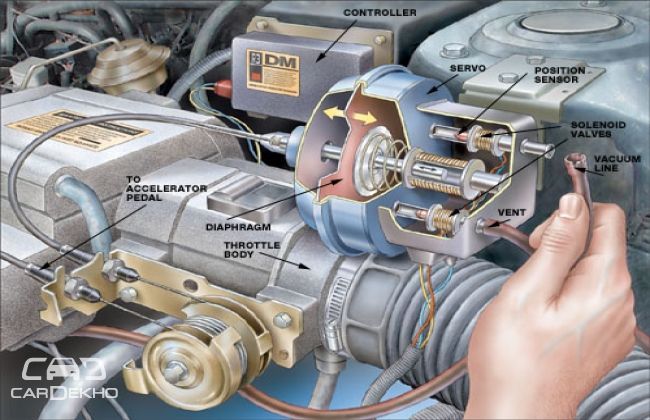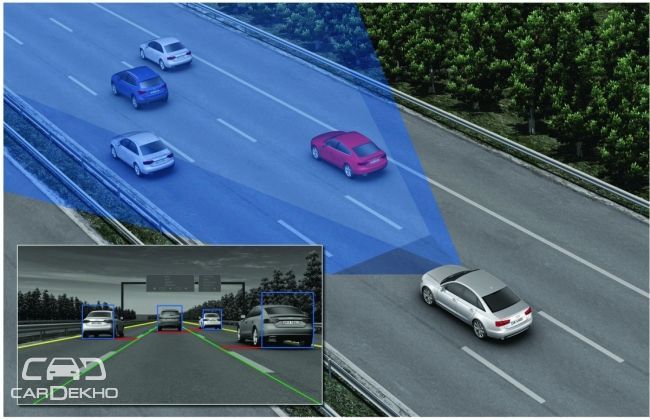Cruise Control : Understand it better!

Technological advancements aren't new for the automotive world. In the mid 40's, we came across an innovation which proved to be a boon for drivers on long journeys. Yes, we're talking about Cruise control also known as speed control or auto cruise. It's a relatively simple system that helps a driver maintain the speed of the car at a desired level through electrical regulation.
Named as 'Auto-Pilot' back then, Cruise Control was invented by a blind mechanical engineer- Ralph Teetor in 1945. The technology first came into play in 1958, with a Chrysler model- Imperial, followed by its New Yorker, Windsor, and several Cadillac cars in the 60's.

How it works:
It's a bit techy and complicated to explain the whole functioning of the Cruise Control, but I've summarised it to depict its basic mechanism. By monitoring time, speed and throttle position of the vehicle, the cruise control's Electronic Control Unit (ECU) commands an actuator to open or close the throttle, which maintains the speed that the driver has selected. The actuator is usually a vacuum powered device that uses engine manifold vacuum to provide the energy to set the throttle correctly. Turning-off the cruise control is as simple as applying the brake, just a gentle tap and it stops. Else, pressing the ‘Cancel' or ‘On/Off' buttons or pushing the clutch pedal in a manual car also stops it. You can easily return to your previously programmed speed by just pressing ‘Resume.'
Pros:
Cruise Control not just makes your longer journeys more comfortable, but also helps in saving money. With linear acceleration, constant speed and lesser use of clutch, your car delivers better fuel efficiency, resulting into money saving. In addition, the cruise control feature also allows you to maintain your car's speed limit, thus you avoid speeding fines, so there's some extra bucks saved again.
Cons :
The system is often intimidating for drivers who have actually never used it, or are not habitual of using it - when the driver takes his foot off the accelerator and the car doesn't slow down, it feels like that the car is no longer in control. Though once you get used to it and become familiar with the ease and benefits this technology brings along, you might get addicted to it.

The advanced - Adaptive Cruise Control :
Adaptive cruise control is similar in design to most of the conventional cruise control systems, but only difference lies in the form of a few additional components in play. Instead of relying on driver input, which can be dicey in emergency and critical conditions, adaptive cruise control systems make use of more accurate and fast laser or radar sensors placed at the vehicle's front. These sensors are capable of detecting the presence and speed of other vehicles, and that information is used to maintain a safe following distance. If adaptive cruise control detects an obstruction in the roadway, or the lead vehicle slows down, the system is capable of cutting the throttle, downshifting, and even activating the brakes.
